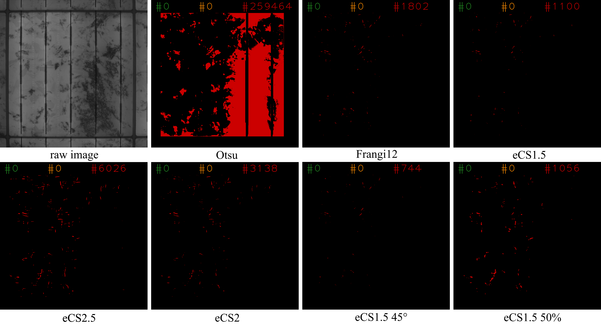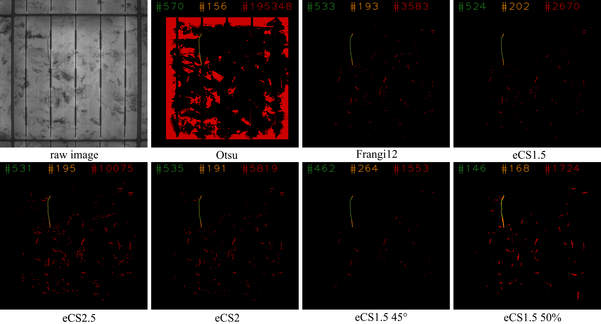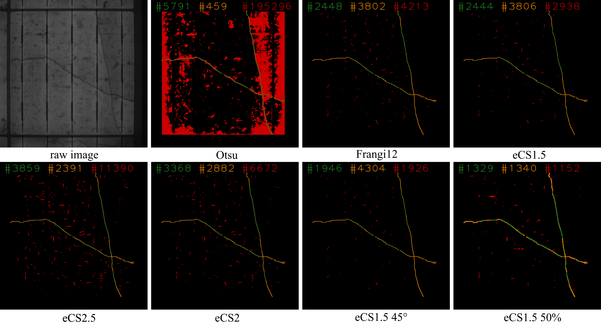
Daniel Stromer M. Sc.
Researcher in the Learning Approaches for Medical Big Data Analysis (LAMBDA) group at the Pattern Recognition Lab of the Friedrich-Alexander-Universität Erlangen-Nürnberg
Whenever using this database, reference the following paper:
D. Stromer, A. Vetter, H. C. Oezkan, C. Probst and A. Maier, "Enhanced Crack Segmentation (eCS): A Reference Algorithm for Segmenting Cracks in Multicrystalline Silicon Solar Cells," in IEEE Journal of Photovoltaics.
doi: 10.1109/JPHOTOV.2019.2895808
https://ieeexplore.ieee.org/document/8638507
If you have any questions, feel free to contact:
eCS: Enhanced Crack Segmentation for Photovoltaics
So far, the algorithm was exclusively tested for electroluminescence images of multicrystalline photovoltaic cells. The database consisted of 47 images (cracks and no cracks) with a size of 1024x1024 px showing a region a bit bigger than a single cell. Furthermore, we evaluated the algorithm for downsized images to decrease runtime.
The code was tested with Python 3.5.4, skimage 0.13.0, and OpenCV 3.4.3.
For testing, unpack the .zip-file into your workspace and run ecs_test.py. We provide a test image as well as it's annotation in '.tif' format (8-bit, 1024 x 1024 px).
Here, the output for three exemplary input images with different parameters are presented. In the first image, no crack is present. In the second image, a small crack is present - located near a busbar. The last image shows two severe cracks, affecting the entire cell and having different orientations.

 +49 9131 85 25246
+49 9131 85 25246
 +49 9131 85 27270
+49 9131 85 27270




